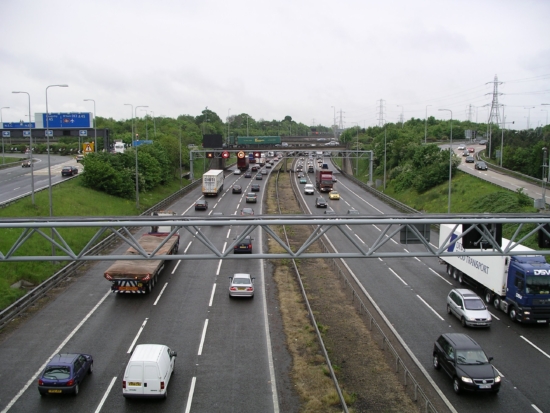UK drivers welcome smart motorways to reduce congestion and emissions
 A stretch of smart motorway on the M42 (Photo: Snowmanradio, CC BY-SA 3.0)
A stretch of smart motorway on the M42 (Photo: Snowmanradio, CC BY-SA 3.0)

- Don’t ignore the red X – Never drive in a lane closed by a Red X.
- Hard shoulder – Is identified by a solid white unbroken line – if there’s no speed limit displayed above it or a Red X is displayed, do not use it except in emergency.
- Stay within the variable speed limit – It’s there to steady the flow of traffic or if there’s a hazard ahead. Keep to the speed limits shown on the signs.
- Keeping left is right – Keep left unless you’re overtaking, no matter how many lanes the motorway has.
- Vehicle Problems – If your vehicle experiences difficulties, e.g. warning light, exit the motorway immediately or as soon as you can.
- Know what to do in a breakdown – Where you can: get left, get out of the flow of traffic, get safe and get help. If the hard shoulder is being used as an extra lane, use the designated emergency areas for emergencies. Always put your hazard lights on and stand behind the motorway safety barrier while waiting for help.
Venson survey shows drivers support smart motorways, but some education is still required to improve safety and a sizeable minority have safety concerns.
With controversial smart motorways continuing to cause debate across the motor industry and within Government, Venson Automotive Solutions has asked drivers for their opinion. Bucking the ‘anti’ trend led by industry influencers calling for alternations to the system, 56 per cent agree that smart motorways are indeed necessary to help improve road safety and ease congestion. Half see the benefits for congestion levels, and a quarter expect smart motorways to ease emissions. However, one in ten admit they don’t know what a smart motorway is, highlighting the need for driver education.
A smart motorway – known in Scotland as an intelligent transport system – is a section of motorway that uses active traffic management (ATM) techniques to increase capacity through variable speed limits and hard shoulder running at busy times.
Whilst the majority support the introduction of smart motorways, 35 per cent of respondents to the Venson survey disagree, citing safety concerns as the main reason; 38 per cent said they would not feel safe in case of a breakdown and being unable to reach an Emergency Refuge Area, 34 per cent believe it unsafe to use the hard shoulder as a running lane in peak times.
With figures showing an increase in near-misses and deaths on motorways after they are converted to smart motorways, these concerns are not unfounded. However, used correctly, smart motorways have the potential to be safer and more efficient than standard motorways, but this requires drivers to fully understand and abide by their unique rules.
Alison Bell, marketing director at Venson Automotive Solutions comments: “Private motorists and company car and van drivers need to familiarise themselves with the dos and don’ts. Businesses also have a duty of care to ensure their drivers know the rules of smart motorways and use them appropriately and safely. Every driver must understand what to do in the event of a breakdown or emergency, take notice of the red X above a closed lane, stick to the variable speed limit and keep left as much as possible unless overtaking.
“An effective way to reduce the risk of a breakdown occurring is to ensure vehicles are always well maintained, and that tyres and fluid levels are checked regularly to ensure the vehicle is in the best condition. It is vital that people do not delay routine maintenance, repairs or vehicle replacement – older vehicles and those not kept in top condition are more likely to breakdown. Even during the nationwide lockdown, whether private vehicles or company cars and vans are being used or not, they must be maintained, and drivers fully trained on the latest rules.”

 AES
AES

Comments